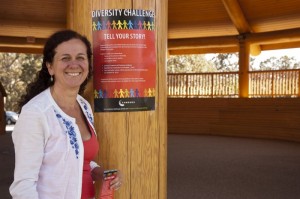Diversity is an important part of Camosun College. It’s cliche but it’s true: characteristics of age, gender, ethnic heritage, culture, sexual orientation, religion, and abilities make up a big part of the Camosun culture.
To celebrate this, Camosun is hosting its first Diversity Story Challenge, a chance for all Camosun students to share their stories.
Mice Albano, an English language development instructor at Camosun and one of the event’s organizers, says one of the most important things about Camosun is that there is such a diverse group at the college. She sees the Diversity Story Challenge as a way to celebrate different voices.
“I want them to be heard, and I want them to realize that their stories are important,” says Albano. “Diversity is what makes Camosun, it’s what makes the fabric of the college.”

One way that the Diversity Story Challenge will help everyone have a chance to share a story is by having two categories: written and spoken. For the written category, students can enter a story (maximum 1000 words) that somehow relates to diversity. For the spoken entries, students may submit stories limited to three minutes. There will be six prizes of $200.
Camosun students understand and appreciate the importance of diversity. First-year student Lauren Talbot says that coming to school is about more than learning technical skills for your career.
“It’s about learning about different cultures and different people all over the world,” says Talbot. “Being intelligent is knowing about different cultures and having a wide view of the world.”
All entries in the challenge must be original works but they do not have to be true accounts. Students are permitted to make up a story as long as it sticks with the contest’s main theme: the power to inspire. The story’s power to inspire will be judged by a diverse committee, who will have no access to who is telling the story in an attempt to obtain an objective conclusion.
The organizers of the contest don’t want to focus on the student’s ability to write grammatically correct sentences; they want to open the door for students to share their stories.
“We want the students to realize that it doesn’t matter what their writing skills are, what matters is that they have a story to tell,” says Albano. “I realize that a lot of times these people are afraid of telling their stories because they feel that they do not have enough language to be able to tell them. We want to celebrate the content, not the structure.”
